The Ultimate Easy Classic Creme Brulee Recipe Anyone Can Master
Crème brûlée dances between simplicity and sophistication, promising a dessert experience that tantalizes every sense.
French culinary traditions have elevated this delicate custard into a worldwide sensation of creamy indulgence.
Silky smooth textures mingle with a crisp caramelized surface, creating a delightful sensory contrast that feels simultaneously elegant and playful.
Professional pastry chefs might make this dessert seem intimidating, but home cooks can master its magical revampation with just a few careful techniques.
Achieving that perfect golden-brown sugar crust requires patience and a steady hand with a kitchen torch or broiler.
Rich egg yolks and heavy cream form the luxurious foundation of this classic treat, promising a deeply satisfying flavor profile.
Prepare to impress your guests with a dessert that looks complex but comes together with surprising ease.
Why Classic Crème Brûlée Is Worth the Effort
Simple Ingredients That Make Classic Crème Brûlée Shine
Dairy Base:Sweeteners and Flavoring:Egg Components:Finishing Ingredient:Optional Components:How to Make Classic Crème Brûlée with That Perfect Crack
Step 1: Prepare Oven and Ramekins
Preheat oven to 300°F. Arrange 4 ramekins (5-) in a large baking pan.
Step 2: Boil Water
Fill a kettle with water and bring to a rolling boil.
Step 3: Infuse Cream
Heat cream in a saucepan over medium-high heat. Options for flavor enhancement:Simmer until edges start to bubble. Remove from heat and let cool 5-10 minutes.
Step 4: Prepare Egg Mixture
In a mixing bowl, combine:Check for white spots and remove. Whisk ingredients until smooth and well blended.
Step 5: Create Custard Base
Slowly temper eggs by adding warm cream:Step 6: Strain Mixture
Pour custard through a fine wire mesh strainer to remove potential lumps.
Step 7: Fill Ramekins
Evenly distribute custard into prepared ramekins. Add hot water to baking pan, filling halfway up ramekin sides.
Step 8: Bake Perfectly
Bake 40-55 minutes. Look for slightly jiggly center with golden edges as doneness indicator.
Step 9: Cool and Chill
Remove from oven. Cool on wire rack for 30 minutes. Refrigerate 3 hours or until completely chilled.
Step 10: Caramelize Topping
Before serving, sprinkle sugar on each custard.
Caramelizing Options:
Method 1: Blow Torch
Method 2: Broiler
Step 11: Serve and Enjoy
Let caramelized tops rest briefly. Serve chilled and savor the creamy, crisp dessert.
Tips for a Smooth and Creamy Classic Crème Brûlée
How to Store and Reheat Classic Crème Brûlée Without Losing the Crunch
Great Pairings for Classic Crème Brûlée
Different Twists on Classic Crème Brûlée to Mix Things Up
Print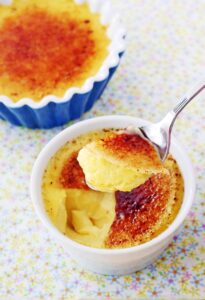
How To Make Classic Creme Brulee Recipe
- Total Time: 1 hour 15 minutes
- Yield: 4 1x
Description
Silky French creme brulee brings pure elegance to dessert tables with rich vanilla custard and caramelized sugar crust. Gentle cream, eggs, and pure vanilla blend into a luxurious treat that delights with each spoonful.
Ingredients
Main Ingredients (Dairy and Eggs):
- 1 ¾ cups (414 ml) heavy cream
- 4 large egg yolks
Sweeteners and Flavoring:
- ¼ cup (50 g) sugar
- 4 teaspoons (20 g) sugar (for topping)
- 1 teaspoon (5 ml) vanilla extract
- 1 vanilla bean seeds (alternative to vanilla extract)
Instructions
- Preheat the oven to 300 degrees Fahrenheit (149 degrees Celsius) and position 4 ramekins (5-or 140-170 grams each) inside a large baking pan.
- Boil water in a kettle to prepare for the water bath technique.
- In a small saucepan, gently heat the cream over medium-high heat, incorporating vanilla bean seeds if available, until it reaches a soft simmer; remove from heat and allow to cool for 5-10 minutes.
- Separate egg yolks, checking for and discarding any white remnants, then whisk them in a mixing bowl with sugar until thoroughly combined and slightly pale.
- Create a smooth custard base by gradually tempering the egg mixture: add one ladle of warm cream while continuously whisking, then incorporate two more ladles, ensuring a consistent texture.
- If not using vanilla bean, stir in vanilla extract to enhance the flavor profile.
- Strain the custard mixture through a fine-mesh sieve to eliminate potential lumps and ensure a silky consistency.
- Distribute the custard evenly among the ramekins, then carefully pour hot water into the baking pan until it reaches halfway up the sides of the ramekins.
- Bake for 40-55 minutes, watching for a slight jiggle in the center that indicates perfect custard consistency.
- Remove from the oven and let cool at room temperature for approximately 30 minutes.
- Refrigerate for a minimum of 3 hours to completely chill the dessert.
- Before serving, sprinkle approximately of sugar evenly across the surface of each custard.
- Use a culinary torch to caramelize the sugar, moving slowly and maintaining a consistent distance until the sugar transforms into a golden-brown, crisp layer.
- Allow the caramelized sugar to set for 1-2 minutes before serving, allowing the surface to harden and create a delightful crackable crust.
Notes
- Requires precise temperature control to prevent egg scrambling during cream tempering.
- Straining the custard mixture eliminates potential lumps for silky-smooth texture.
- Hot water bath ensures even gentle cooking and prevents custard from cracking.
- Chilling time matters significantly for setting perfect consistency and flavor development.
- Caramelizing sugar demands careful technique to achieve golden-brown crisp topping without burning.
- Prep Time: 20 minutes
- Cook Time: 55 minutes
- Category: Desserts
- Method: Baking, Boiling, Simmering, Broiling
- Cuisine: French
Nutrition
- Serving Size: 4
- Calories: 406 kcal
- Sugar: 22g
- Sodium: 55mg
- Fat: 36g
- Saturated Fat: 23g
- Unsaturated Fat: 9g
- Trans Fat: 0g
- Carbohydrates: 26g
- Fiber: 0g
- Protein: 6g
- Cholesterol: 186mg
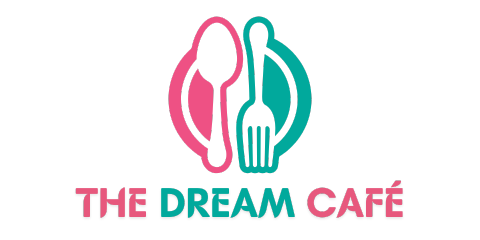
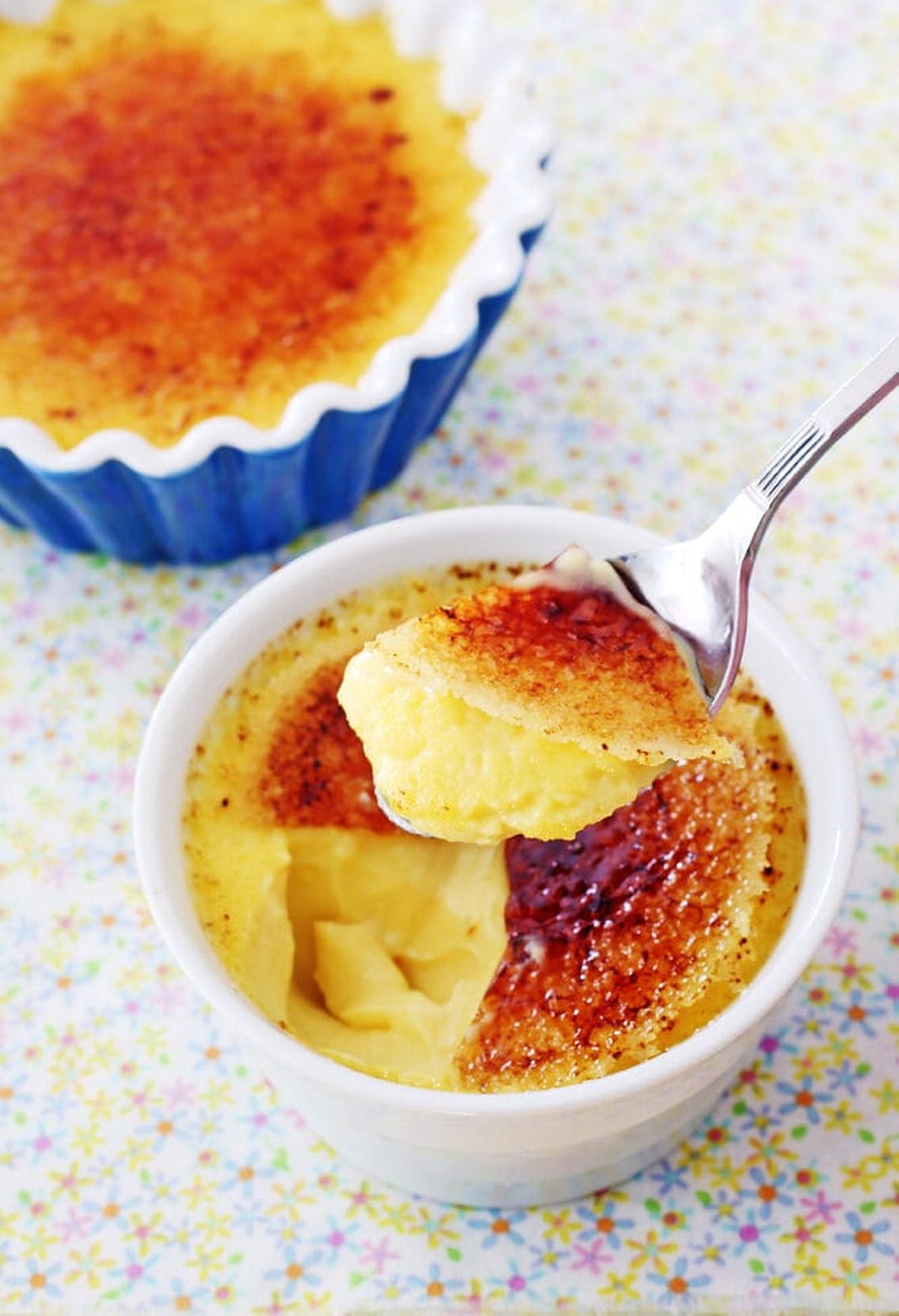
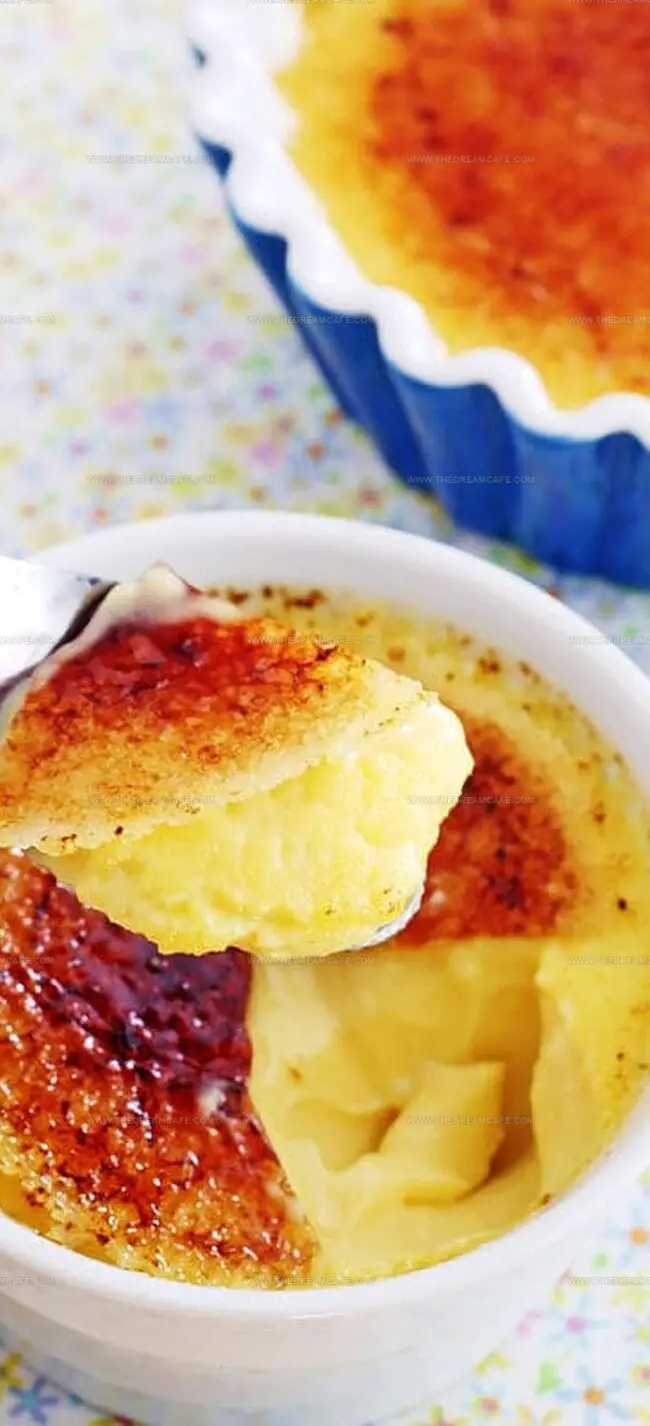
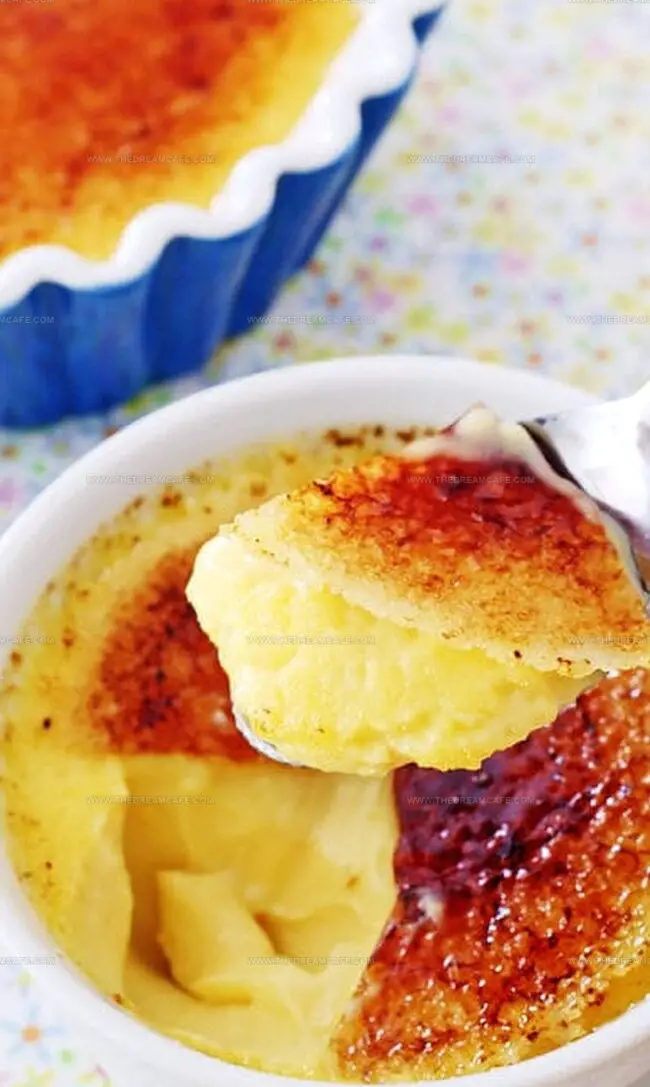
Julian Park
Co-Founder, Cuisine Researcher & Food Culture Writer
Expertise
Education
The Institute of Culinary Education (ICE), Los Angeles, CA
Julian Park is a natural storyteller at The Dream Café who blends hands-on culinary experience with a passion for exploring global food traditions. A graduate of The Institute of Culinary Education in Los Angeles, Julian combines professional technique with a love for cultural discovery, diving into how dishes reflect heritage, migration, and identity.
His work spans everything from in-depth cuisine guides to reflections on everyday meals around the world. With a curious palate and a journal always close by, Julian helps readers connect with food in a way that feels so insightful and personal.